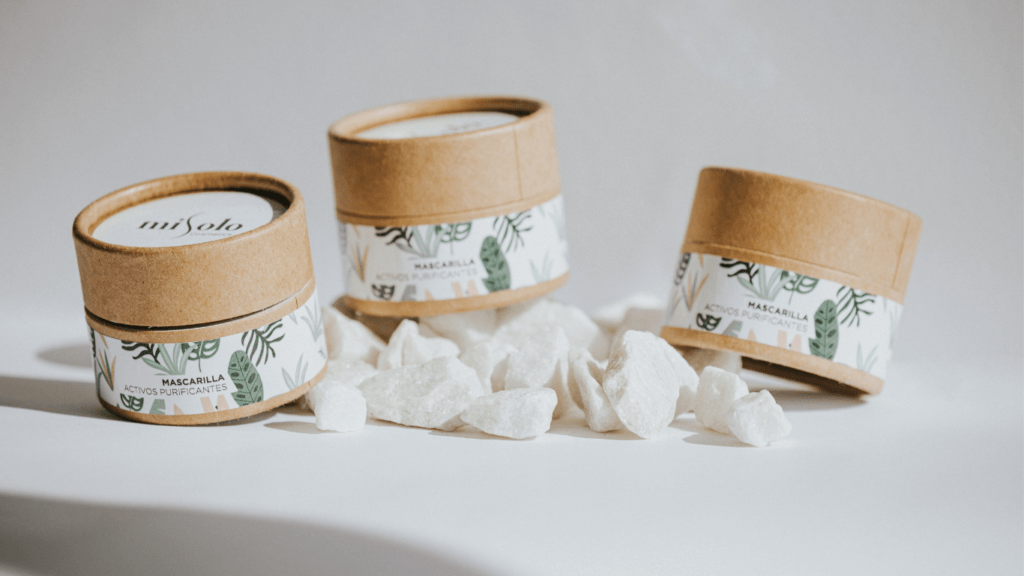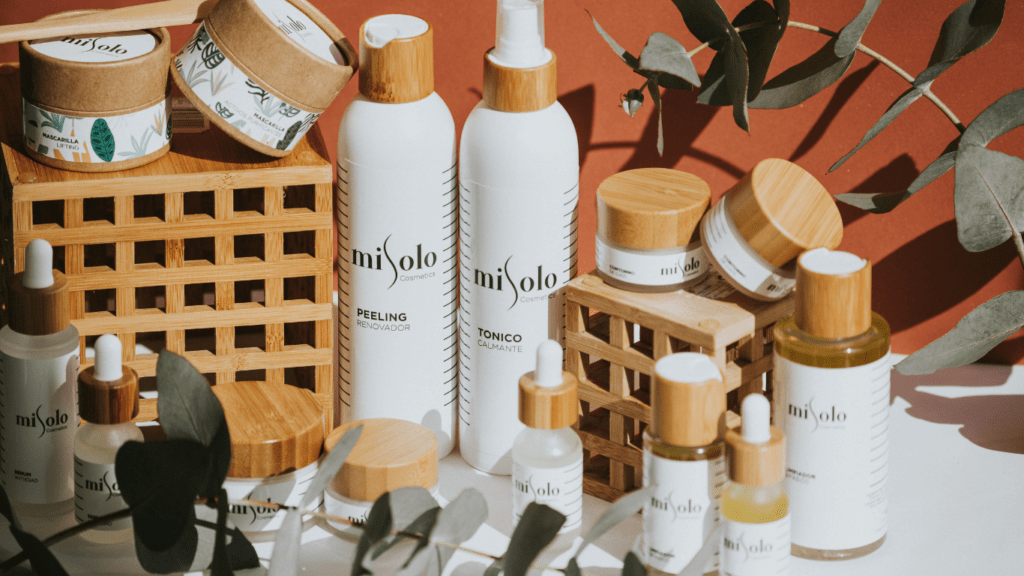Understanding Sustainability in Packaging
Sustainability in packaging refers to designing and producing packaging that minimizes environmental impact. It’s becoming vital as consumers demand greener solutions.
Definition and Importance
Sustainable packaging aims to reduce waste, use fewer resources, and minimize carbon footprints. Essential elements include:
- biodegradable materials
- recycling capabilities
- eco-friendly production processes
This approach not only conserves natural resources but also caters to the rising consumer demand for environmentally responsible products.
Historical Context
The concept of sustainable packaging emerged in the late 1980s with the introduction of recycling. Initially, the focus was on reducing plastic waste. By the early 2000s, attention expanded to include all aspects of packaging life cycles, from raw material sourcing to disposal. This shift reflected greater awareness of the long-term environmental consequences of packaging waste.
The Beauty Industry’s Current Packaging Practices
The beauty industry often relies on visually appealing, yet environmentally harmful packaging. Major brands use a variety of materials, many of which contribute to pollution and waste.
Common Materials Used
Plastic dominates beauty packaging due to its durability and lightweight properties. For instance, shampoo bottles, cream tubs, and makeup containers often consist of different types of plastic. Glass, favored for its premium feel and product preservation abilities, is also prevalent in perfumes and skincare products. However, its production and transportation contribute substantially to the carbon footprint. Cardboard, used mainly for outer boxes, offers recyclable potential, yet the ink and lamination processes often compromise its eco-friendliness.
Case Studies: Major Brands
L’Oréal has made strides toward sustainable packaging by integrating recycled and bio-based materials, aiming for 100% eco-friendly packaging by 2025. Meanwhile, Estée Lauder has committed to using 50% recyclable, refillable, or reusable packaging by 2025. Small brands like Lush lead with ‘naked’ products, offering solid bars without packaging. Another example, Fenty Beauty by Rihanna, uses minimal materials and designs packages for recyclability. These initiatives reflect a growing industry shift toward environmental responsibility in packaging practices.
Environmental Impact of Packaging Waste
Packaging waste from the beauty industry significantly affects the environment, contributing to pollution and resource depletion.
Plastic Pollution
- Plastic materials dominate beauty product packaging, creating extensive waste.
- Over 120 billion units of packaging are produced globally by the cosmetics industry each year
- This plastic waste often ends up in landfills and oceans, taking hundreds of years to decompose.
- Microplastics from these products contaminate water sources, affecting marine life and human health.
- Plastic’s durability, while convenient, leads to long-term environmental hazards.
Carbon Footprint
The beauty industry’s packaging also contributes to carbon emissions. The production and transportation of packaging materials involve energy-intensive processes that release greenhouse gases. Glass, often used for premium products, requires substantial energy for manufacturing and emits more CO2 during transport due to its weight. Cardboard, though more sustainable, sometimes involves harmful ink and lamination processes, which elevate its carbon footprint. Reducing these emissions is crucial for minimizing the industry’s overall environmental impact.
Innovations in Sustainable Packaging

The beauty industry is innovating to address its environmental impact. New technologies and materials are emerging to create eco-friendly packaging.
Biodegradable Materials
Biodegradable materials play a crucial role in reducing waste. Brands use plant-based plastics, such as polylactic acid (PLA), which decompose naturally. For example, Seed Phytonutrients packages its products in paper bottles with a biodegradable liner. Myro uses a blend of cornstarch and sugarcane to produce compostable deodorant tubes. These innovative materials minimize landfill waste and environmental pollution.
Reusable and Refillable Packaging
Reusable and refillable packaging helps cut down on single-use waste. It encourages a circular economy where products have longer life cycles. Kjaer Weis offers makeup compacts designed to be refilled, reducing the need for new packaging. Aveda’s refill stations let customers replenish their favorite products using the same containers. These practices save resources and reduce carbon footprints, demonstrating a shift towards sustainability in the beauty industry.
Innovations like these show that it’s possible to maintain attractive packaging while being environmentally responsible. By adopting biodegradable and reusable solutions, the beauty industry can significantly lower its ecological impact.
Industry Challenges and Solutions
The beauty industry faces numerous challenges in adopting sustainable packaging. These span economic constraints and shifting consumer behavior.
Economic Considerations
Switching to sustainable packaging often involves higher initial costs. Eco-friendly materials tend to be more expensive than traditional plastics or glass. For instance, biodegradable plastic like PLA can cost significantly more than conventional plastic. Smaller brands might struggle to invest in these solutions without affecting their profit margins. However, the long-term benefits include potential savings from reduced waste management costs and compliance with future regulations aimed at minimizing environmental impact. Companies like L’Oréal and Estée Lauder are already investing in sustainable practices, setting a precedent for cost-effective transitions.
Consumer Behavior
Consumer behavior significantly impacts the industry’s approach to packaging. There’s a rising demand for eco-friendly products, as shown by a 2019 survey indicating that 73% of global consumers would change consumption habits to reduce their environmental impact. Brands that adopt sustainable packaging often see increased loyalty and a positive brand image. For instance, Lush’s minimal packaging appeals to eco-conscious buyers, fostering customer loyalty. Educating consumers about the benefits of sustainable packaging also plays a crucial role. Brands that effectively communicate their efforts in sustainability often see gains in customer trust and market share.
By addressing these economic and behavioral challenges, the beauty industry can advance toward a more sustainable future, benefiting both the environment and their bottom line.
The Role of Regulations and Standards
Regulations and standards play a pivotal role in guiding the beauty industry toward more sustainable packaging practices. By adhering to these guidelines, companies can ensure they are minimizing environmental impact and meeting consumer expectations.
Government Policies
Government policies are essential to drive the adoption of sustainable packaging. In the European Union, the Packaging and Packaging Waste Directive regulates packaging design and waste management. This directive aims to reduce packaging waste and encourages the use of recycled materials. The U.S. has policies like the Plastic Waste Reduction and Recycling Act that promotes the development of sustainable packaging through research and innovation.
Global Standards and Certifications
Global standards and certifications provide a framework for sustainable packaging. The ISO 14000 family of standards focuses on environmental management, helping companies improve their sustainability practices. Certifications like Cradle to Cradle and FSC® (Forest Stewardship Council) indicate products made with materials that meet rigorous environmental criteria. Brands adhering to these standards can effectively assure consumers of their commitment to sustainability.
How Consumers Can Contribute
Individuals play a crucial role in driving the beauty industry toward sustainability. By making informed choices, consumers can significantly reduce environmental impact.
Mindful Purchasing
Choosing products with sustainable packaging promotes eco-friendly practices. Look for items with minimal packaging or biodegradable materials. Brands often highlight their use of recycled or recyclable materials on their labels. For example, Burt’s Bees uses packaging made from post-consumer recycled content. Opt for multi-use products that reduce the need for multiple containers. Purchasing in bulk also minimizes packaging waste.
Supporting Sustainable Brands
- Supporting brands that prioritize sustainability reinforces eco-friendly practices.
- Brands like Lush and Fenty Beauty have committed to reducing environmental impact through innovative packaging.
- Lush uses naked packaging (no packaging at all) for some products, while Fenty Beauty offers refillable options.
- By choosing these brands, you’re encouraging more companies to adopt similar sustainable practices.
- Additionally, follow and engage with these brands on social media to stay informed about their latest sustainability initiatives, further amplifying their efforts.





